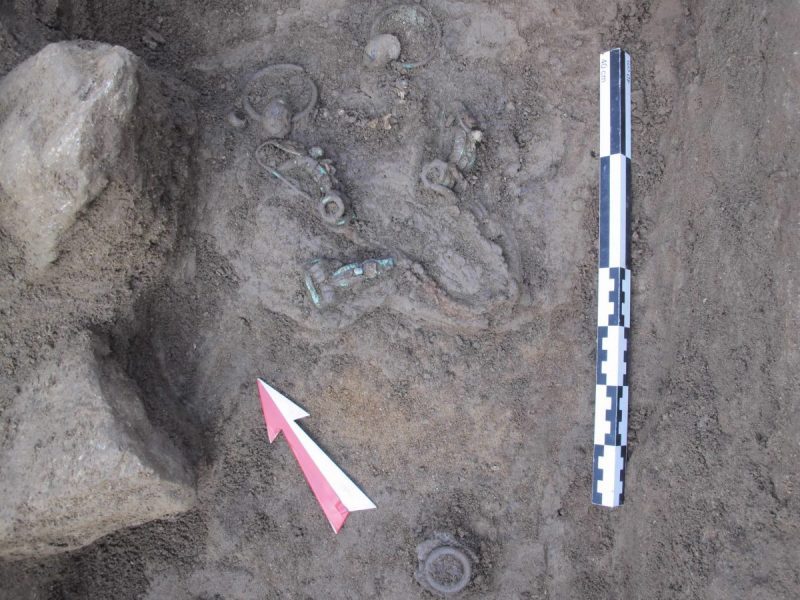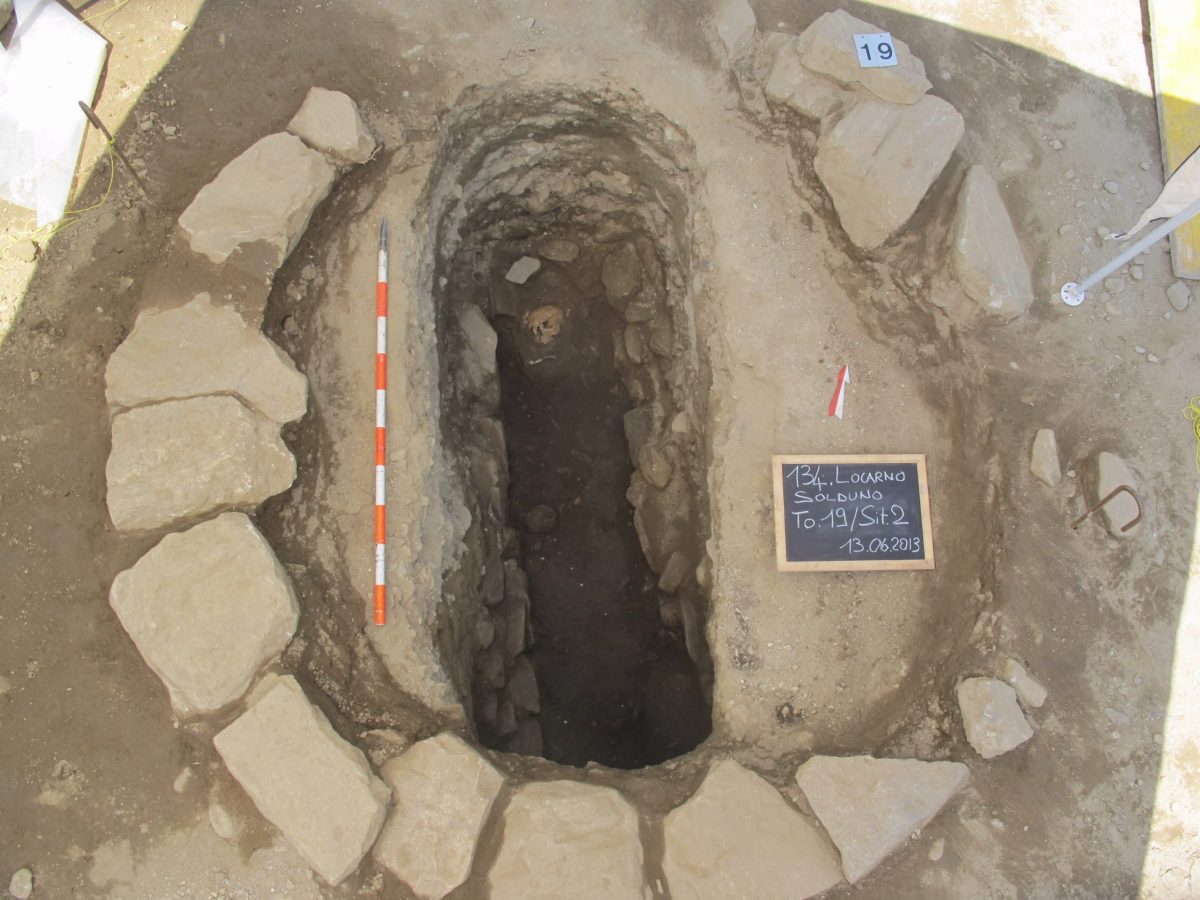Archaelogical Contexts | Locarno, Giubiasco and Tenero
Locarno, Giubiasco and Tenero
Giubiasco, necropolis of Palasio
Giubiasco, in the Bellinzonese area, has returned a significant number of necropolises especially dating back to the Iron Age. This testifies the central role played by this region in the history of transalpine contacts. One of the latest archaeological researches has focused in the locality of Palasio, which in 2013 returned ca. thirty burials. The chronology of these findings sits between the beginning of the second Iron Age and the middle La Tène periods (4th-2nd century BCE).

Fig.1 – Giubiasco, Palasio grave 12 (courtesy of Ufficio dei beni culturali – Servizio Archeologia, Repubblica e cantone Ticino)
The graves include inhumations and are for the most part oriented along a northeast-southwest direction. Only in one case, the orientation follows a northwest-southeast direction. Burials are delimited by walls built with local stones and are covered by stone slabs. All burials includes grave good items characterized by a standardized arrangement. Grave goods include personal objects partly still worn at the time of the deposition, (e.g. pins, earrings and rings). Tableware, mostly including a jug, a glass and a bowl, is usually located near the feet of the deceased. The burials returned only dental remains, still preserved due to their proximity to metal grave good objects.
Locarno, necropolis of Solduno

Fig.2 – Locarno, Solduno grave 19 (courtesy of Ufficio dei beni culturali – Servizio Archeologia, Repubblica e cantone Ticino)
The necropolis of Locarno-Solduno has been investigated since the 1930s through numerous excavation campaigns that have brought to light over 300 tombs. These findings cover a chronological interval from the Iron Age to the early Middle Ages. Although more than half of the tombs date to the Iron Age, the preservation of the skeletal remains is extremely low, and limited to 18 burials. Among these, two tombs found in 2013 allowed to place these burials between the end of the early Iron Age and the beginning of the second Iron Age.
Tenero-Contra
The archaeological investigation of the necropolis of Tenero in 1970 revealed about twenty burials dating to the second Iron Age and Roman times. The 16 Iron Age burials include inhumations and are mainly oriented along a northeast-southwest direction. Graves are rectangular or sub-rectangular, delimited by stones and pebbles, and feature coverings of slabs, stones and pebbles. Grave goods feature a standardized composition and typically include one or more ceramics and ornamental objects, especially pins and earrings. These objects allow to date these burials between La Tène B2 and La Tène C1 (1st- second half of 3rd century BCE). Only two burials have returned skeletal remains.


